Ge Research Group
University of California, Irvine, Deparment of Chemistry
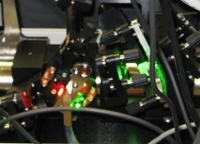
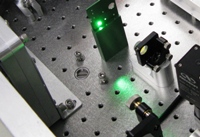
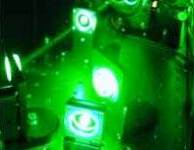
|
Ge Research Group University of California, Irvine, Deparment of Chemistry |
 |
 |
 |
Detailed knowledge of molecular structures and dynamics in condense phases is
essential to a complete and predictive understanding of chemical, biological,
and materials processes. Our research program is directed to determine how
molecular structures change in time, at equilibrium and during reactions. Topics
of current interest include: structure and dynamics of peptides, proteins,
liquids, and interfaces; carrier dynamics in solar cell materials; and
nanoplasmonics. These endeavors
lead us to devise new techniques in nonlinear spectroscopy and microscopy that can provide
detailed information on the time dependence of nuclear and electronic motions.
Ultrafast two-dimensional infrared (2D IR) spectroscopy and its applications in biomolecular structure determination and condensed matter dynamics
We are exploiting
new experimental techniques that are vibrational analogues of multidimensional
NMR. The extension beyond a single dimension gives these techniques the ability
to disentangle structural information from complex spectra where the couplings,
correlations, and relative angular orientations between structural units are
revealed as "cross peaks". Moreover, the picosecond time resolution of
2D IR makes it an ideal structural probe for short-lived
intermediates in chemical or biological processes once initiated by external
triggers. The necessary science of multidimensional multicolor IR
spectroscopy is being developed in our laboratory. Experimental results are
compared to computer simulations to bring out atomic level understanding of the
processes in question.
We are applying 2D IR to the study of complex systems such as
peptides, proteins, liquids, membranes, and their composite interfaces.
Structural distributions, evolutions, and their environmental dependence are
investigated. Dynamics of vibrational relaxation, molecular reorientation, intermode vibrational
energy transfer, and chemical exchange are studied. Strategic incorporation
of isotope labels and vibrational markers are used to zoom into atomic moieties
of particular interest. Current topics include peptide-membrane interactions,
amyloid peptide aggregation, and enzyme catalysis.
Sum-frequency generation (SFG) spectroscopy and microscopy and their applications in surface chemistry, polymer physics, and nanoplasmonics
We are developing SFG spectroscopic and microscopic techniques that can reveal structure and dynamics in noncentrosymmetric systems, such as surfaces, interfaces, and biological tissues. By combining these techniques with surface plasmon enhancement of novel nanostructures, we will push the detection limit towards study of trace molecules at interfaces. We are building a femtosecond SFG microscope that is capable of time-resolving nonlinear response as well as multiplex detection in the frequency domain with submicron spatial resolution. Applications include catalysis, photon-driven devices, and biological systems.
Nonlinear scattering-type scanning near-field optical microscopy (s-SNOM) and its applications in nanoplasmonics and carrier dynamics
We are pushing our temporal and spatial resolution to the femtosecond-nanometer range with a new s-SNOM instrument that is capable of near-field imaging, nano FTIR, and pump-probe nanoscopy. We are applying s-SNOM to near-field mapping of plasmonic nanostructures and carrier dynamics in solar cell materials.
Highlight of some recent projects
 |
 |
| A new method to remove scattering | Ultrafast dynamics of tyrosine ring mode |
| J. Phys. Chem. B, 128, 8835 (2024) | J. Chem. Phys., 155, 035102 (2021) |
 |
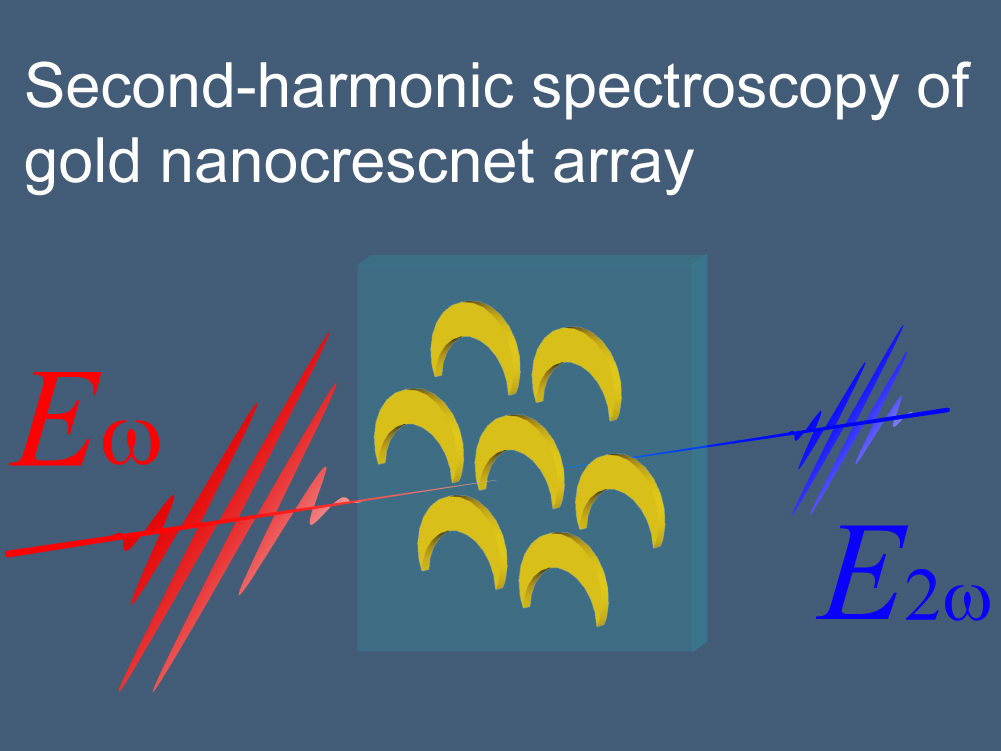 |
| Phase sensitive VR-SFG microscopy at 80 MHz | Nonlinear response of gold nanocrescent array |
| J. Phys. Chem. B, 125, 9507 (2021) | J. Phys. Chem. C, 124, 20424 (2020) |
 |
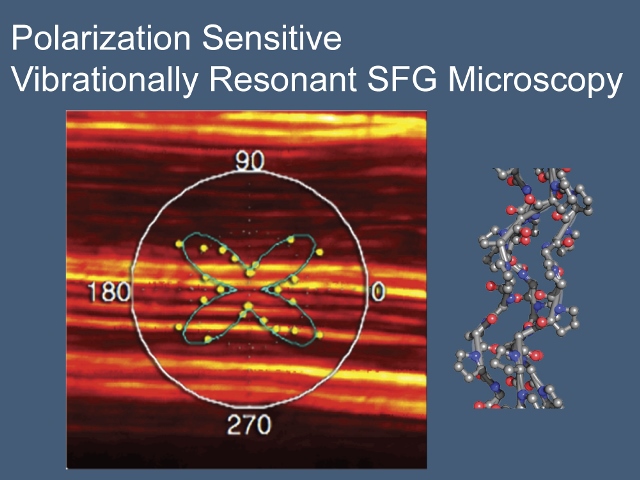 |
| New noise reduction algorithm | Polarization sensitive SFG microscopy of collagen I fibers |
|
Opt. Exp., 25, 26262 (2017) Opt. Exp., 27, 20323 (2019) |
J. Phys. Chem. B., 119, 3356 (2015) |
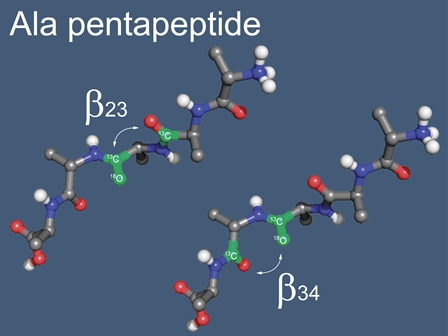 |
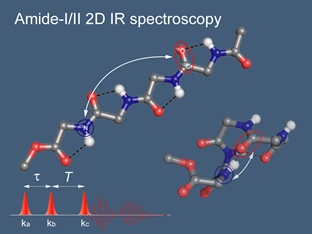 |
| Conformational analysis of penta-alanine | The amide-I/II couplings in fully extended conformation |
| J. Phys. Chem. B., 120, 5325 (2016) | J. Phys. Chem. C., 118, 29448 (2014) |
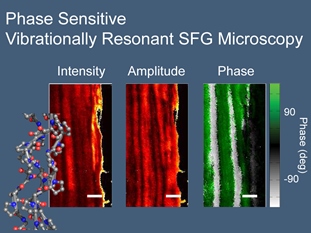 |
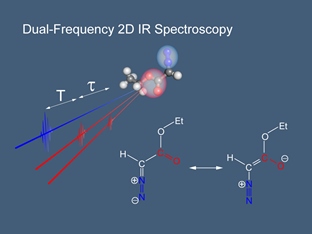 |
| Mapping molecular orientation of collagen I fibers | Frequency correlation between different modes |
| J. Phys. Chem. B., 117, 6149 (2013) | Chem. Phys., 422, 22 (2013) |
 |
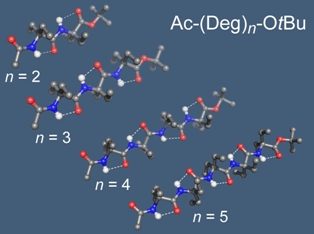 |
| Rotational isomerization of a ketone molecule | The amide-I and II modes in fully extended peptide chains |
| J. Phys. Chem. B, 116, 11292 (2012) | J. Phys. Chem. B, 115, 5168 (2011) |
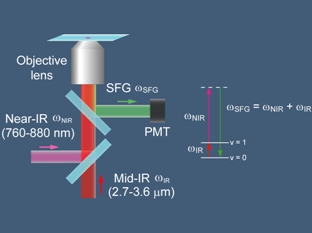 |
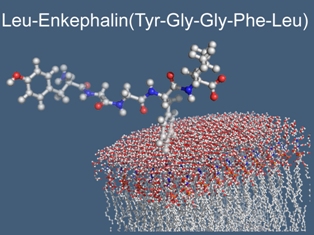 |
| Sum-frequency generation microscopy | Probe peptide-membrane interaction |
| Opt. Lett., 36, 3891 (2011) | J. Phys. Chem. B, 114, 1180 (2010) |
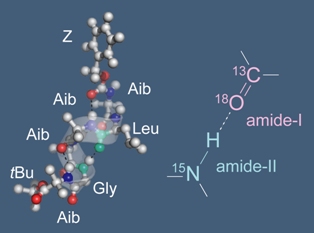 |
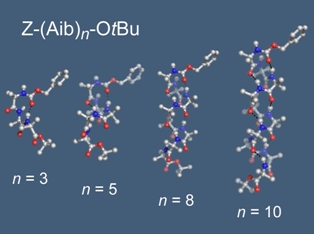 |
| Local interaction between the amide-I and II modes | Onset of the 310-helical secondary structure |
|
J. Phys. Chem. B, 113, 11775 (2009) J. Am. Chem. Soc., 131, 2042 (2009) |
J. Am. Chem. Soc. 130, 6556 (2008) |
 |
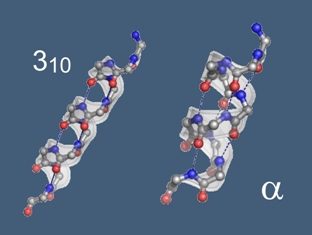 |
| Comparative studies of simulated 2D IR spectra | Interplay between 310- and α-helices |
|
J. Phys. Chem. B 114, 1434 (2010) J. Phys. Chem. B 113, 12037 (2009) |
J. Phys. Chem. B 111, 3222 (2007) J. Phys. Chem. B 110, 5834 (2006) |
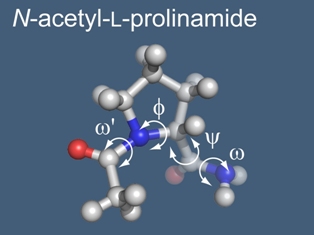 |
|
| Conformation of a model terminally-blocked amino acid | |
| J. Phys. Chem. B 110, 19891 (2006) |
Funding supports from the following agencies are gratefully acknowledged:
National Science Foundation CHE-1414466, CHE-1310693, CHE-1013071